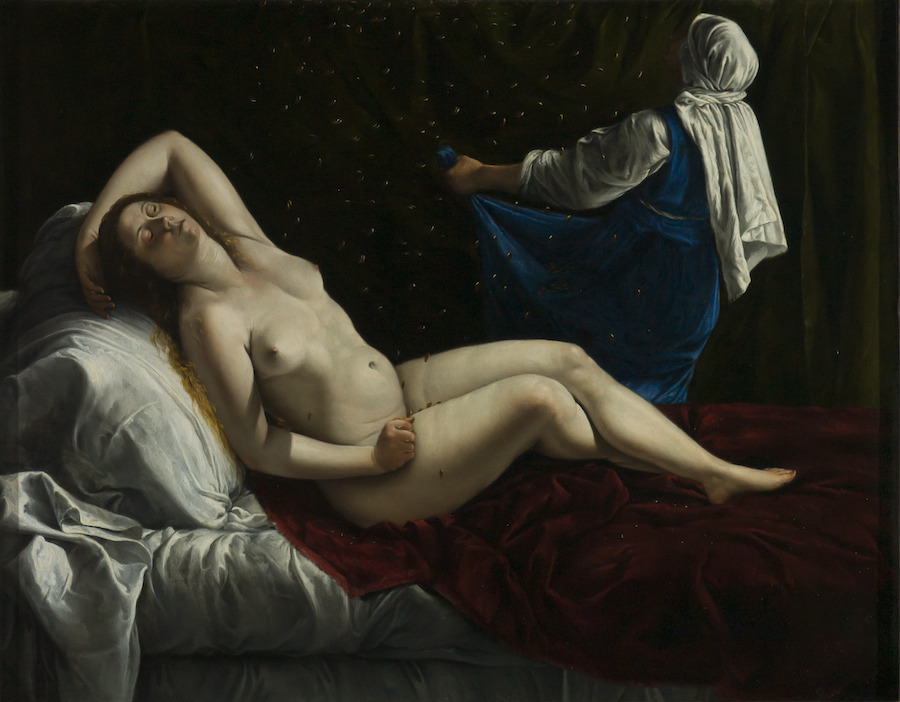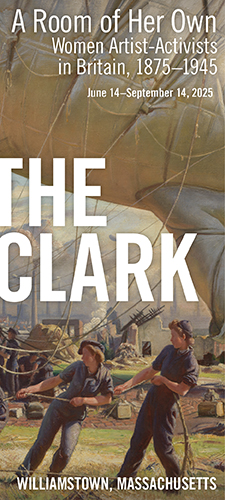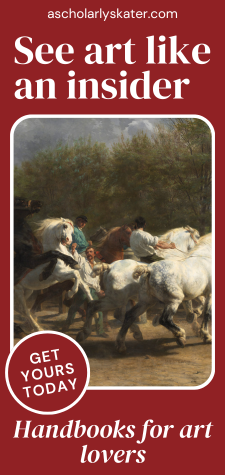by Erika Gaffney, Art Herstory Founder
Almost 100 years ago, Virginia Woolf famously speculated that if Shakespeare had had a sister of equal genius, she would have suffered in obscurity because of her gender—and the phrase “Shakespeare’s Sister” entered our cultural lexicon. In the near-century since the publication of “A Room of One’s Own,” scholars have found that Woolf’s assessment was overly pessimistic. Some women of Shakespeare’s time did find, or make, opportunities to nurture and express their literary and/or theatrical abilities.

Of course, women’s talents are not, and never were, limited to a particular category. Today’s scholars are bringing to light the achievements of women in all spheres of accomplishment—including the visual arts—going back at least as far as the Renaissance.
In 1928, if Virginia Woolf had asked, “What if Michelangelo had had a sister,” her imagined life trajectory probably would have been as dismal as that of Woolf’s hypothetical Judith Shakespeare. But, there were female Old Masters! Though their names may not be familiar to us now, these painters and sculptors were successful in their time. They supported themselves and their families through their art. And their works—portraits, mythological and biblical depictions, religious art, botanical illustrations, sculptures, and more—were not just local novelties. These women artists were internationally known. Their works were prized by kings and princes, diplomats and popes.

Rediscovering History’s Great Women Artists
Today, the world of the arts is abuzz with exciting discoveries about female Old Masters. Art historians, museum curators, art dealers, biographers, dramatists, and authors of historical fiction are among the professionals whose work focuses on history’s women artists.
Scholars and cultural heritage specialists are continually discovering new material about or by Renaissance and Baroque women artists. Art historians are reattributing to women works that were once thought to have been created by men. World-class museums make a point of exhibiting the artworks created by women from past centuries that still exist today. Auction houses take special care to profile the female Old Master offerings in their sales. And they are realizing record prices for works by women artists.

Follow this blog and the Art Herstory social media channels (Facebook, Twitter, LinkedIn, Instagram and Bluesky) to see more works by, and information about, the many female artists of sixteenth-, seventeenth-, and eighteenth-century Europe. My next post will highlight the names and works of a dozen of these women. And, read here about the female Old Masters featured on the initial six Art Herstory note cards.
So, metaphorically at least, Michelangelo did have a sister—as did Velázquez, Donatello, Vermeer, and Rembrandt. Even now, experts are writing her back into the art historical record. We look forward to the day that the names of female Old Masters are as familiar, and as beloved, as those of their brothers.

held at The J. Paul Getty Museum
More Art Herstory blog posts:
A Dozen Great Women Artists, Renaissance and Baroque
Another Dozen Great Women Artists from Long Ago
Floral Still Life, 1726—A Masterpiece by Rachel Ruysch, by Dr. Lawrence W. Nichols
Angelica Kauffman and Mary Moser: Founding Women Artists of the Royal Academy
Gesina ter Borch: Artist, not Amateur (Guest post by Dr. Nicole E. Cook)
The Protofeminist Insects of Giovanna Garzoni and Maria Sibylla Merian (Guest post by Prof. Emma Steinkraus)
Hearts of Our People: Native Women Artists (guest post by Dr. Elizabeth Sutton)
An Interview with Carrie Callaghan, Author of “A Light of Her Own”
The Priceless Legacy of Artemisia Gentileschi: A Curator’s Perspective (Guest post by Dr. Judith W. Mann)
‘Bright Souls’: A London Exhibition Celebrating Mary Beale, Joan Carlile, and Anne Killigrew (Guest post by Dr. Laura Gowing)
New Adventures in Teaching Art Herstory (Guest post by Dr. Julia Dabbs)
Renaissance Women Painting Themselves (Guest Post by Dr. Katherine A. McIver)
Rachel Ruysch (1664–1750): A Birthday Post
An Interview with Joy McCullough, Author of “Blood Water Paint”
Why Do Old Mistresses Matter Today? (Guest Post by Dr. Merry Wiesner-Hanks)




